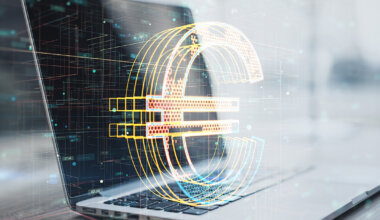At the end of September 2020, the European Commission presented its draft for a “Regulation on markets in Crypto-assets”, MiCAR for short. This is about nothing less than the regulation of crypto assets and their ecosystem in the EU, i.e. the issuers and service providers. For a variety of reasons, it is fortunate that this draft does not yet represent the final version, which is ambitiously planned to be released at the end of the year. This is because there are numerous questions regarding its contents which have not yet been resolved, despite long discussions with experts and other nerds. In light of this, we will probably frequently deal with the MiCAR in this blog in the coming months. In particular, its methodological approach is fraught with problems.
Table of Contents
A bird’s eye view of the MiCAR methodology
- The central starting point of the regulation is the distributed-ledger technology (DLT) or similar technology. It is already remarkable in itself that a certain technology is the requirement for the application of a financial law.
- The subject of the Regulation is crypto-assets on the basis of this technology.
- With regard to the regulatory requirements, the Regulation draws a distinction between three types of crypto-assets: e-money tokens (EMTs), asset-referenced tokens (ARTs) and other crypto-assets (including utility tokens). EMTs and ARTs are called “stablecoins”.
- The criteria for separating them into these three categories is based on the characteristics of the relevant crypto-assets, such as the reference for its value (a single currency, a basket of currencies, goods or other assets) and their use as a means of payment.
- The Regulation generally only applies to crypto-assets that are not issued by a central bank or do not fall under existing EU laws in the area of financial services. However, this approach is not consistently applied throughout as an exception is available to e-money.
This methodological approach has far-reaching consequences. If the MiCAR comes into force in its current version, this would mean that there are (at least in theory), crypto-assets that from a regulatory perspective could be classed as (see Art. 2):
- financial instruments,
- e-money,
- (demand) deposits (incl. structured deposits),
- securitisation,
- EMT,
- ART,
- utility token, or as
- other crypto-assets.
This sounds like a job-creation programme for lawyers. This approach could only work if the terms listed above were clearly defined and could be clearly differentiated from each other. However, in this regard, the draft has some room for improvement. This gives rise to fundamental questions, such as when are demand deposits that are kept on decentralised accounts on the blockchain considered to be crypto-assets. Are they not EMTs? Is the term “tokenised scriptural money”, which is already used in literature, not a contradiction in itself? Can an account be a token at the same time? It gets even more complicated when we turn to e-money as Art. 43 of MiCAR equates EMTs with regular e-money, resulting in circular arguments when referencing back to Art. 2.
Undefined fiat currency
Even at the meta level that more broadly considers” crypto-assets versus fiat currency”, there is confusion as to the terms. In the draft, both superordinate terms are presented as opposites. The MiCAR only applies to crypto-assets that do not constitute fiat currency. Among other things, the MiCAR regulates exchanges and re-exchanges between both types of currency, the consequences of using one or more fiat currencies as a reference basis for crypto-assets and the use of fiat currencies for investing the funds received. For this, the term ‘crypto-asset’ is defined but despite its eminent role, no legal definition of fiat currency can be found. Not even the recitals contain any information thereon.
The term fiat currency was already previously used in an EU law, namely the 5th Anti-Money Laundering Directive (5AMLD). This contains the opposite terms that are fiat currency versus virtual currency. A definition of fiat currency is also not contained therein. However, it can be deduced from the definition of virtual currency (Art. 3 No. 18):
a value that is issued or guaranteed by a central bank or a public authority, is mandatorily attached to a legally established currency and possesses the legal status of a currency or money.
In recital No. 8 of 5AMLD, the following types of money are said to constitute fiat currency: legal tender (bank notes and coins) and e-money. Objection! What about scriptural money (book money or bank money)? This was simply forgotten here by the legislator. If e-money constitutes fiat currency, then definitely so does scriptural money. After all, both types of money are tied to a legal currency from a regulatory perspective. This means fiat currency = cash + scriptural money + e-money. I would like to take this opportunity to propose the following to the legislator, who is so far obviously afraid of drafting a definition of fiat currency: Just use the term “funds” as this is defined in the PSD2 (Art. 4 No. 25) to include precisely these three types of money.
In several parts of the MiCAR, the term “fiat currency” is used with the qualification “that is legal tender”. Example: For EMTs the reference base is a fiat currency but only if it is legal tender (Art. 3 No. 4). Generally speaking, and in almost all countries, only cash counts as legal tender. So how can a certain type of money be a reference value for a crypto-asset? Does this make sense to you? It doesn’t to me. Most likely, the Commission means the following: The reference base is a legally defined currency in which the legal tender is also denominated.
The ECB’s objection
In its current opinion on the MiCAR (dated 19 February 2021), the ECB has quite rightly demanded clarifications in this and other areas. It rejects the use of the phrase “fiat currencies that are legal tenders” and instead proposes the term “official currencies”. This would help to get right of the ambiguous term “fiat currency” but not with the sole reference to cash as legal tender which does not make any sense in this part. With their use of “currency”, the ECB in this part indeed only refers to cash (see footnote 16 in the ECB opinion) and not currency in the broader sense of the word. Only if interpreted in the sense of the latter, things would be logical again.
The ECB further criticises the very broad and technology-based definition of crypto-assets. In footnote 12 it refers to a definition that is more precise and more suitable for regulation and which is used by the ECB in their Occasional Paper (Nr. 223/2019, S. 7):
“any asset recorded in digital form that is not and does not represent either a financial claim on, or a financial liability of, any natural or legal person, and which does not embody a proprietary right against an entity”.
As per this definition, according to the ECB, a crypto-asset would not be a financial instrument, e-money, bank money or central bank money (no matter in what form) and would be technology-neutral. This addresses the differentiation problems currently contained in the MiCAR. However, the ECB fails to implement this methodical suggestion by proposing concrete amendment proposals for the text – most likely because the text would have had to be rewritten in a lot of places.
Are mutations of stablecoins still stablecoins?
The MiCAR’s methodical approach and the proposed regulation of crypto-assets result in a strange circular reasoning, at least when it comes to e-money tokens. With respect to this stablecoin, whose value is by definition only tied to a single legal currency, the regulatory requirements would lead to the fact that nearly all criteria of regular e-money would also need to be fulfilled. Art. 43 even states that an EMT is considered to be regular e-money. This means that the stablecoin turns into a fixed coin with a required 1:1 parity when exchanging and re-exchanging into the relevant currency. This forced mutation results in the fact that the legal currency is no longer merely the reference base to stabilise the token’s value but the crypto-asset itself becomes – just like scriptural money and regular e-money – a digital representation of this currency. It would then no longer fulfil the EMT’s own definition criteria, i.e. “that purports to maintain a stable value by referring to the value of a fiat currency that is legal tender” (Art. 3 No. 4).
As per the definition, aliens are not citizens of Mother Earth. However, if the guys (m/f/d?) have landed here and passed their citizenship test, they are no longer aliens. This is how it is for the domesticated EMT. At the end of the day it ends up in the fiat-currency-camp.
You can also phrase it differently. According to Wikipedia, stablecoins are defined as follows: “cryptocurrencies whose price is steered through active or automated financial policy with the aim to minimise the volatility of the price of the stablecoin, relative to a national currency, a currency basket or other assets”. The first-named category of stablecoins (reference to a currency with a flexible exchange rate) will be prohibited in the EU in future according to the MiCAR. I am surprised that the cryptocurrency scene has not yet called for a revolution against the MiCAR. With regard to the second category (currency basket) and the third (assets) – known as asset-referenced tokens (ARTs) in the MiCAR – it remains to be seen what consequences the ECB’s opinion will have on these stablecoins. It looks as if the issuers of those crypto-assets will also enter some rocky waters.
P.S.: Nominal money currency (“Nominalgeldwährung”)? No thanks!
Where does the term fiat money come from? There are two interpretations. The original interpretations refer to fiat money as opposed to commodity money. In that sense we only have fiat money today: money without any intrinsic value. Following this definition, all cryptocurrencies would therefore of course also be fiat money. The crypto-scene then took over this term many years ago to denote the antipode of anarchist cryptocurrency creation: money issued or controlled by the state. It was obviously successful in doing so, because its counterparts – the fiat money regulators – now use this second interpretation themselves.
In the German version of the 5AMLD the term “fiat currency” was still translated with “fiat money”. The German translation of the MiCAR now uses the peculiar word composition “nominal money currency” (“Nominalgeldwährung”). Not even Google knows what to do with this and asks: “Did you mean nominal money and currency?” I don’t know what the translators were thinking but this new word creation is not acceptable. Since the relevant meaning of composite words in the German language is only revealed by the last part of a word composition, the word “currency money” would be alright, whereas “money currency” would not.
Currency is always money but money is not always currency. Just as there are polar bears and grizzly bears, there is also play money, black money and currency money but no bearpolar and no money currency. Moreover, the word part “nominal money” is also out of place here as it refers to the original interpretation of fiat money, where – in contrast to commodity money – the nominal value is higher than its intrinsic value. My suggestion as a German with an immigrant background: For these reasons, the word “nominal money currency” must not be allowed to take root in the land of poets and thinkers. At the same time, of course, this creation would have one advantage. Upon entry of this non-word, a good search engine would only display the MiCAR and any comments thereon in the German language.
Cover picture: Copyright © Adobe Stock / Aliaksandr Marko




